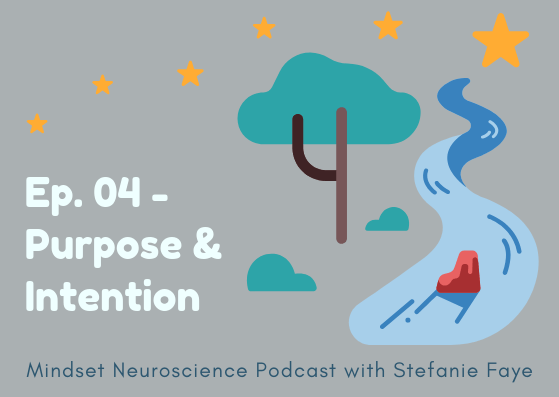
"Stop Resisting" goes against the physiological make-up of the human nervous system
Here’s why:
1) if a person says "stop resisting" or "stop fighting", it means whoever they’re saying it to is already in a sympathetic nervous system threat mode.
What does that mean? It means blood flow has now increased to the skeletal muscles of the body. These are the muscles that get activated for ‘limb movement’ or the ‘mobilization response’.
The body will have a very difficult time being still when the sympathetic nervous system mobilization response is activated*
How do we know if the SNS threat-mobilization response is happening in someone?
You may hear and see abrupt, fast movements of the limbs, and possibly an abrupt ‘vocalization’ (such as a yelp, shout or yelling). The threat response is not just from physical danger, this can happen in verbal arguments as well. Even if you did not hear what the people were saying, you would be able to tell by their limb movements that their sympathetic nervous/threat response has been activated.
Adaptive or effective communication in the form of talking is difficult at this point because those brain features are being lowered in priority to allow for mobilization or limb movement. If there is talking, it may sound more like barking, with sharper bursts of air, less melodic and less melody than when someone's physiological state is calm and regulated.
All of this to say that when a person is in a threat (sympathetic nervous system) response, this changes EVERYTHING about their ability to interact with you.
*If there is no movement, this means a person is in the immobilization response, which I go into further below
2) The brain-body defense mode is not wired for verbal communication
Talking will likely create confusion when the threat response is active.
If a person is in the mobilization mode of attack or defense, it means that not only is the blood now flowing to engage their muscles for running away or fighting, it also means that neural activity is going to be as conservative as possible.
The brain is now in survival mode.
Instructions won't make sense because processing words is too resource-intensive for the brain-body system - which is now prioritizing mobilization-defense.
The brain can't engage in the circuit-expensive, time-consuming activity of analyzing, thinking of future consequences or weighing options. These are associated with the prefrontal cortex.
The flexible, intelligent, most evolved part of the brain is not accessible when we are threatened. From a survival standpoint, it shouldn’t be. It would take too long for us to act and we may die from not reacting quickly enough. So we can’t get around this happening when we feel threatened. (Perry)
Verbal explanations or commands to someone who is in a threat response have more to do with tone and frequency of voice than the words because the brain-body system is incapable of processing that cognitively-expensive information in those moments.
This means that if a person's voice sounds aggressive, the frequency of their voice will be what triggers a defensive reaction - regardless if their words are trying to say something else.
3) From a brain perspective, “stop resisting” is a sub-optimal instruction
Because the brain’s more evolved systems needed for cognitive understanding of things like words is inaccessible during a stress response, it also makes no neurological sense to use a verbally complex/confusing command like ‘stop resisting’.
From a neurolinguistic viewpoint, ‘stop resisting’ or 'stop fighting' is already a bad command. When you work with young children, one thing you’ll learn is if you say ‘stop running’, their brains start to a) light up with images of running because you just said that word, and b) all other options that are not running are therefore ok (like skipping, jumping, walking really fast, etc.).
The brain works better with affirmatives. Stop resisting - even without the effects of stress - is not an ideal instruction. However, like mentioned above, using commands like ‘relax’ while pinning someone down will not make them relax.
If a person's appearance (such as a uniform) has neural associations with the experience of threat, then even the appearance of that person will activate the defense-mobilization response. *
This is why community and relationship-building by police and community organizations would be helpful. It could create new neural associations between communities and people in uniform.
The reverse is also true: if police associate darker skin color with 'threat' or 'subhuman', this is a neural schema/associative neural circuit which will activate the police's SNS system, making evolved, flexible brain features less accessible to them. To get around this, re-wiring of circuits need to happen in safe learning environments. This is why police training needs to address the concept of systemic racism and unconscious bias.
4) Holding someone down and expecting them not to move goes against human physiology
Because there is blood flow increasing rapidly to the skeletal muscles and an opening up of the bronchi to allow more oxygen to prepare the body to run away, hit or punch whatever they feel threatened by, this means that there is a build up of kinetic energy.
The human body is like a container. If energy is building up (due to, for example, atoms and molecules bumping into each other faster because of increased activity), the energy is building up inside the container.
We know from the laws of physics, that this energy eventually needs to be released somehow outside of the ‘container’.
Animals do this by “shaking it off”. If their stress response is activated, you will then see them FIND SOME WAY TO RELEASE THE BUILD-UP OF ENERGY.
Humans also must have the ability to ‘shake off’ the kinetic energy that is building up within them when they go through a stress response. We can do this by feet pounding on the ground, body shaking, limbs flailing, grabbing or hitting something. There is some release of this energy build-up through yelling and screaming as well.
If these releases are not able to happen, such as when someone is held down or their mouth is clamped, a much more primitive stress response can occur.
5) A person collapsing, fainting or dying is a predictable physiological response
If our sympathetic nervous system activates due to a threat, and there is increase blood flow to skeletal muscles, but those muscles are not able to be used and release the kinetic energy, the sympathetic system then shuts down because it is no longer functional.
This is related to something called “Dissolution” (or “Jacksoninan dissolution” named after John Hughlings Jackson, a neurologist from the 1800).
As a last grasp for our survival, the body basically conserves all possible resources:
- It restricts massive amounts of brain activity (which require a lot oxygen and glucose)
- It restricts blood flow to the limbs so that only vital organs get what they need to keep going.
- A large cranial nerve called the vagus nerve acts as a brake on the heart and clamps down on it to restrict oxygen and blood flow to only the bare minimum to survive. (Porges)
This is when we see a person (or mammal) faint, go unconscious, collapse, dissociate. This can actually happen to mice if they get caught in a situation where there is no chance to escape a predator. Sometimes they come back alive, but sometimes their heart fails and they die.
Of course, this is a manoeuver that may need to be used in extreme circumstances, when a person is being a danger to themselves and others.
The issue arises when police are holding someone down excessively, especially when the person doesn't have a weapon.
6) Being held down until the point of submission has deleterious effects on the brain that last an entire lifetime
In less severe cases, rather than going unconscious, the person will appear ‘submissive’ because their limbs don’t have enough blood flow to resist anymore.
If a person is still awake when this ‘submission’ happens, their nervous system is still restricting resources in the brain so they may dissociate or have an out of body experience. This can happen to rape victims and children being abused while the incident is happening. it’s an attempt of the body to keep the body alive by not overwhelming the kidneys and other life systems that would get so flooded with stress chemicals that they would literally shut down.
It’s like a temporary death of awareness to keep the physical body alive long enough for the event to pass, so that awareness can return. Unfortunately, this has profound impacts on mental and physical health for the rest of that person’s life. (Van Der Kolk)
This can create a 'body memory' (Van der Kolk) that will impact the person's mental health for the rest of their lives unless it is addressed through some type of trauma-informed therapy. There is a cellular-level imprint stored from being held down until submission. This can create a lasting, hyper-vigilant state in that person, where sensory thresholds are altered and there is a constant detection of threat even when it is not there. The person may appear very distracted even in safe environments because their system has now been re-wired for constant threat-detection.
I bring this up because being held down is an extremely traumatizing event - it is an extreme experience of helplessness. Although there are cases where this needs to happen, it's important to be aware of how long-lasting the effects of this trauma has on the brain-body system. If people are held down, and then are put in jail, and possibly held down there as well - it means there are large numbers of people holding a collective trauma. If they are not able to find a way to re-process this, it can create unconscious effects on behavior.
Let’s just go over that again:
When a person feels threatened, there is a strong likelihood that they will biologically need to move and that they cannot use communication or logical thinking in those moments.
If their body is not allowed to release the internal energy build-up from their stress response, there is an increased chance they will collapse, faint, go unconscious and in severe cases, die.
Holding someone down and expecting them to not move contradicts human physiology.
Why is this practice used?
This is either done by some people on purpose because they know there will be resistance, in which case they are given their ‘ticket’ to use force.
There are also some people who are not aware of this, and are simply engaging in practices that are always going to end badly without realizing that this dissolution process is in many ways predictable.
For people such as police who are not aware of this automatic struggle response, they may actually think a person is ‘purposely’ trying to ‘defy’ them. This then makes the police try harder to control them.
The ‘fight/struggle’ response is a nervous system release of energy. Trying to get someone to stop moving and expect during this response will very likely end up in struggle.
If a person responsible for public safety is in the SNS threat response mode, they have less chance of helping others feel safe.
There is another important point to add. If a police officer's sympathetic nervous system is engaged, this means that:
- their brain is also conserving as much energy as needed to keep them mobilized to attack or run away
- they may be unable to access areas of the brain related to thinking of future consequences, moral reasoning and flexible problem-solving
- the frequency of their voice and their limb movements, among other things, will send out micro-signals that trigger a threat response in another.
These are all features that are needed in situations of danger. But we need to keep in mind that these features of the brain-body system make it difficult for any type of new, flexible behaviors to emerge.
So... what's the solution?
The human stress response will be triggered whenever a human feels vigilant or under threat. The only way around this hardwired, biologically response is to create conditions of physical and most importantly psychological safety.
The way to induce psychological safety among humans is through trust and a disruption of repetitive, inflexible neural circuits. Without a disruption of these circuits, history will continue to repeat itself.
In spring 2021, we'll go into how the above points relate to historical patterns of power, oppression and subjugation. w
Sources:
Bruce Perry, MD, PhD: Homeostasis, Stress, Trauma and Adaptation
Dr. Stephen Porges: the Polyvagal Theory: Neurophyiological Foundations of Emotions, Attachment, Communication and Self-Regulation
Bessel Van der Kolk: The Body Keeps the Score


